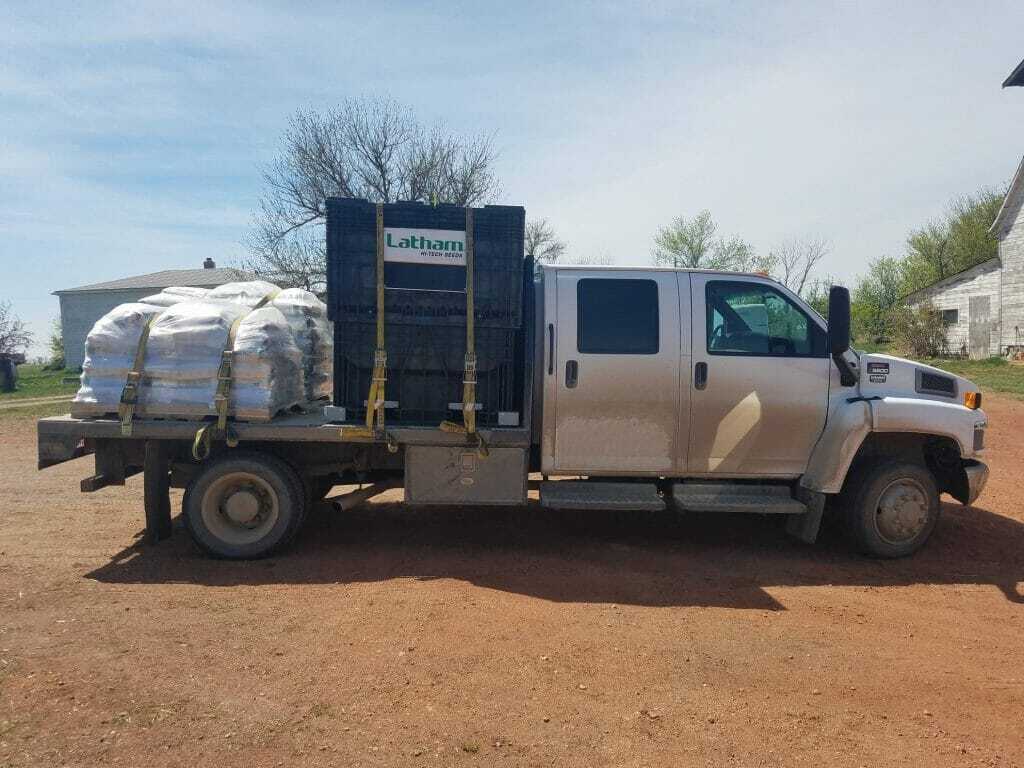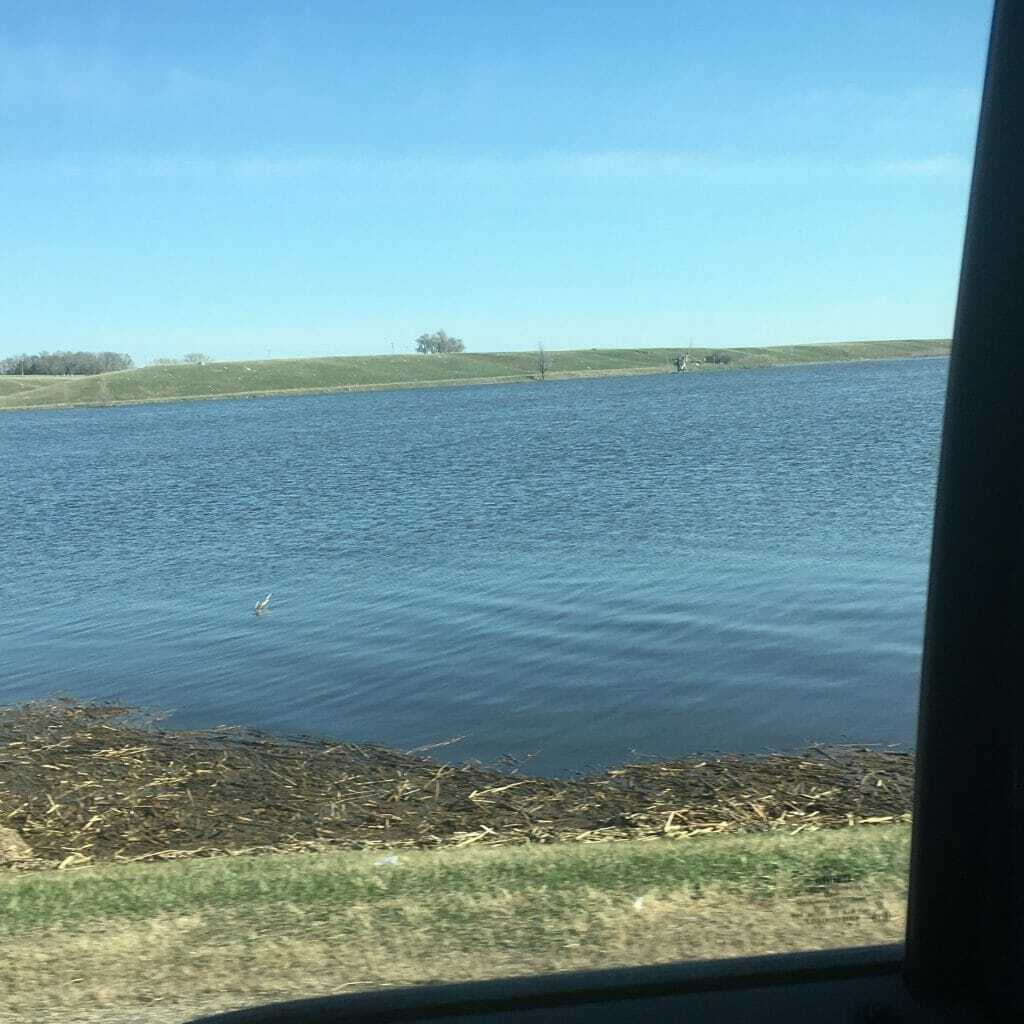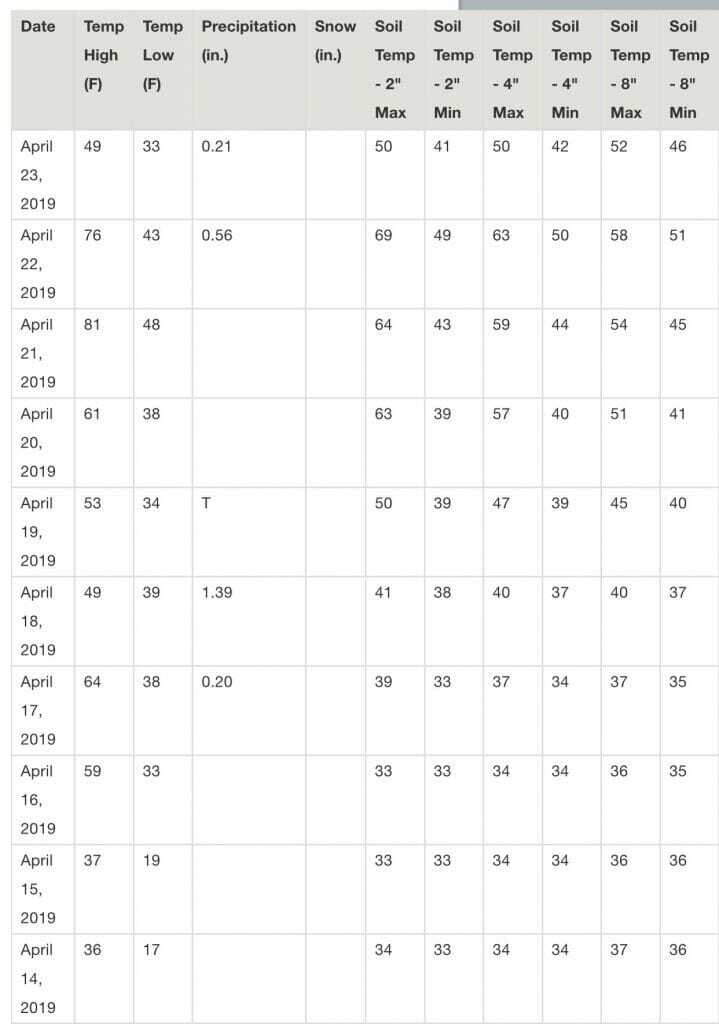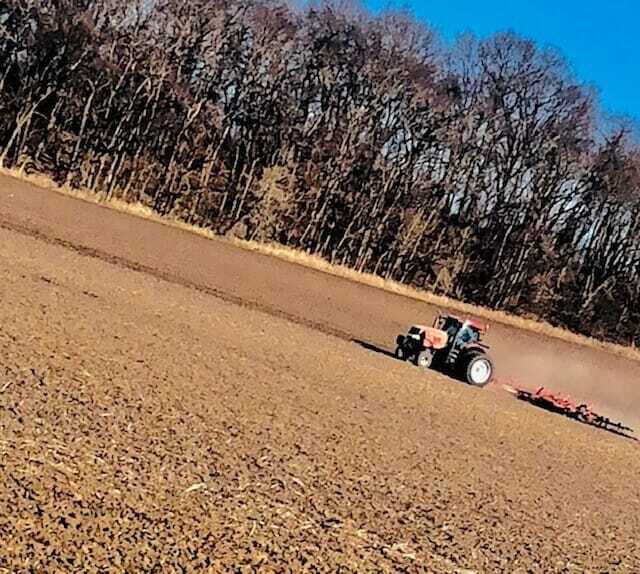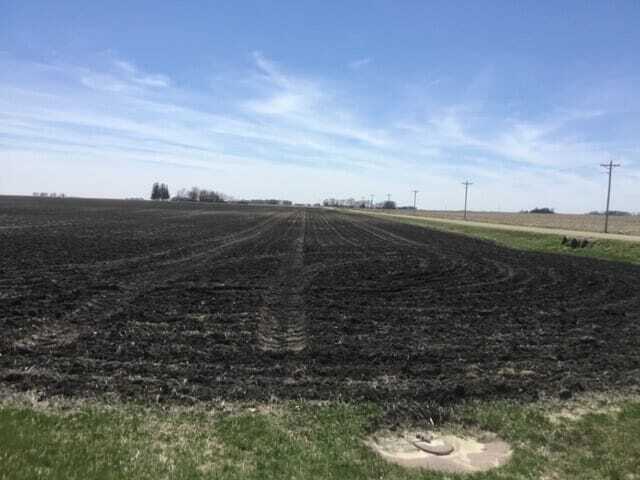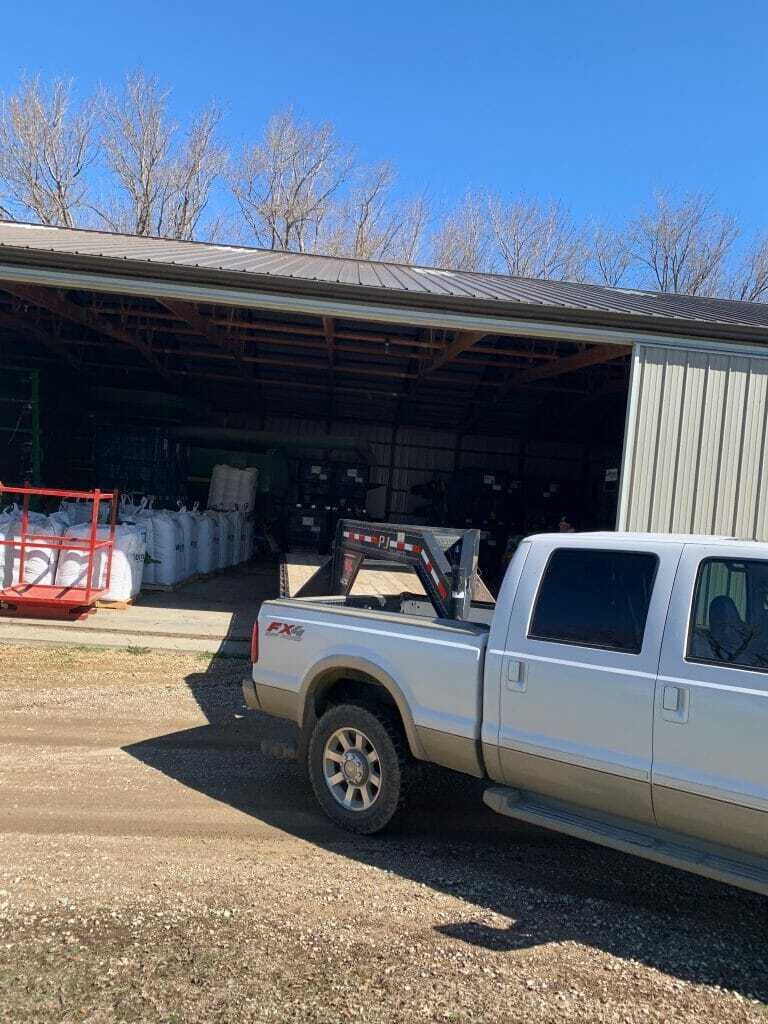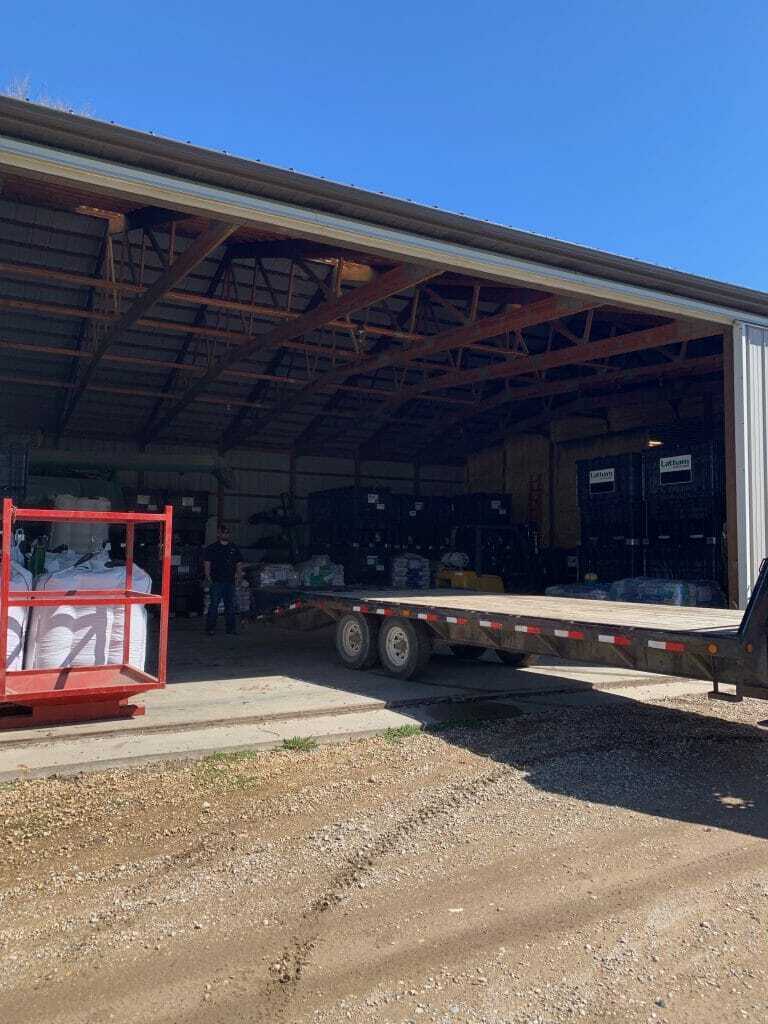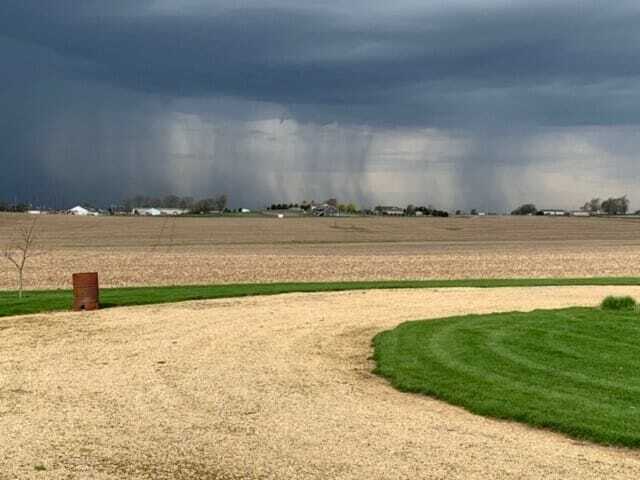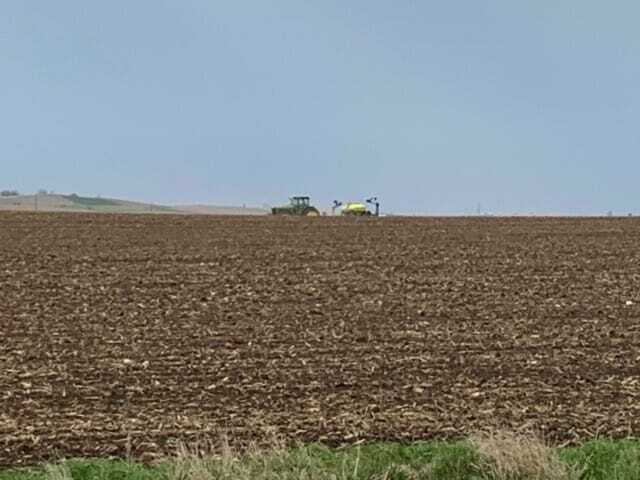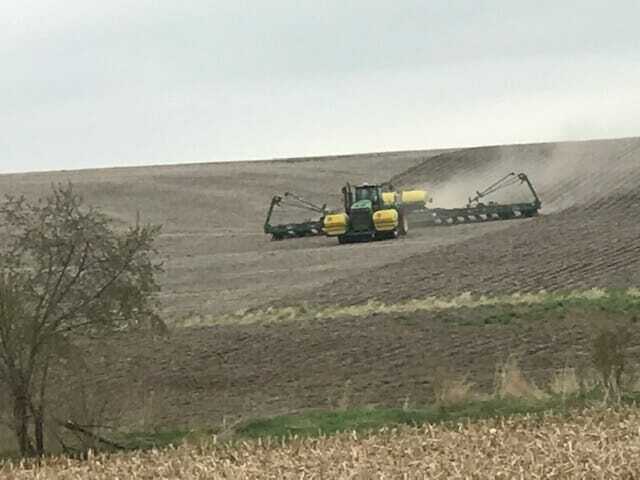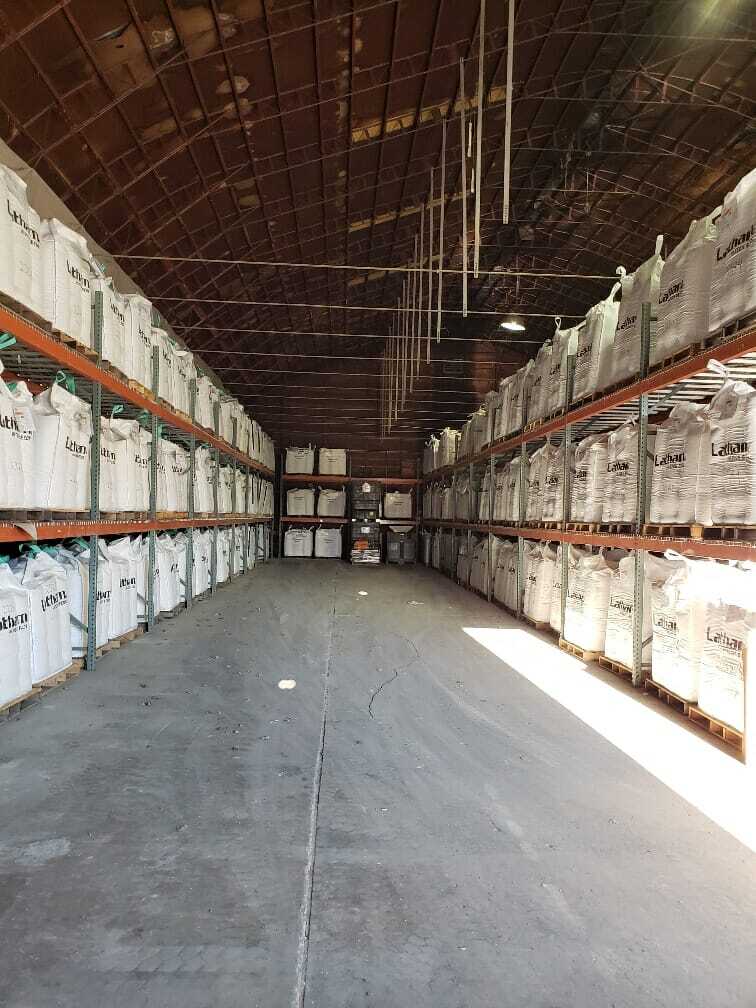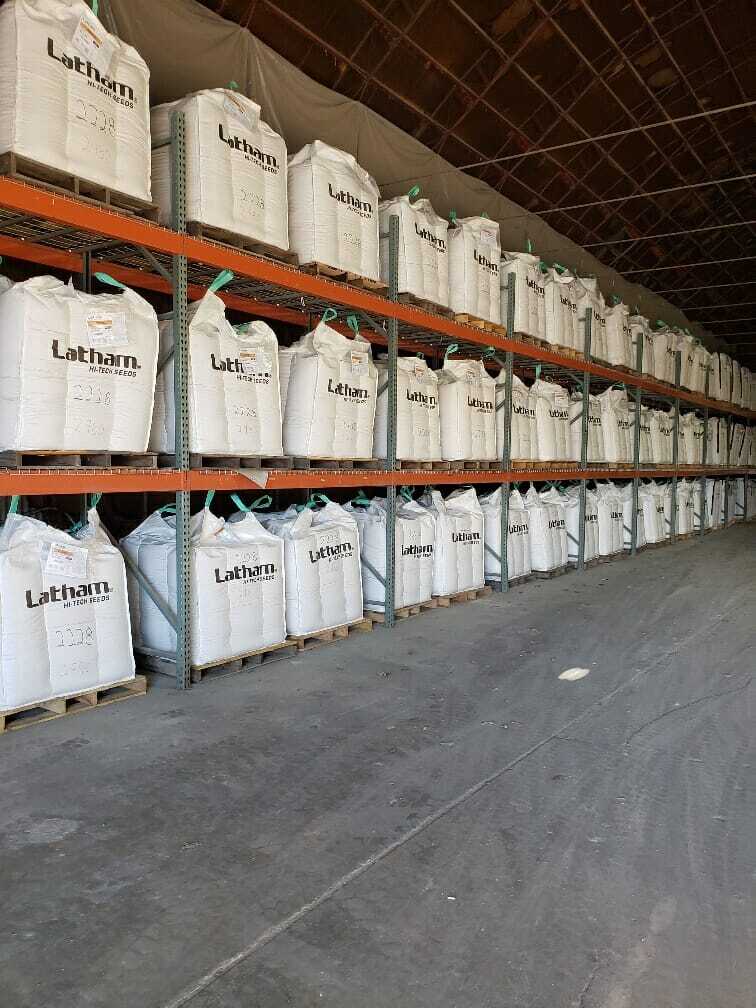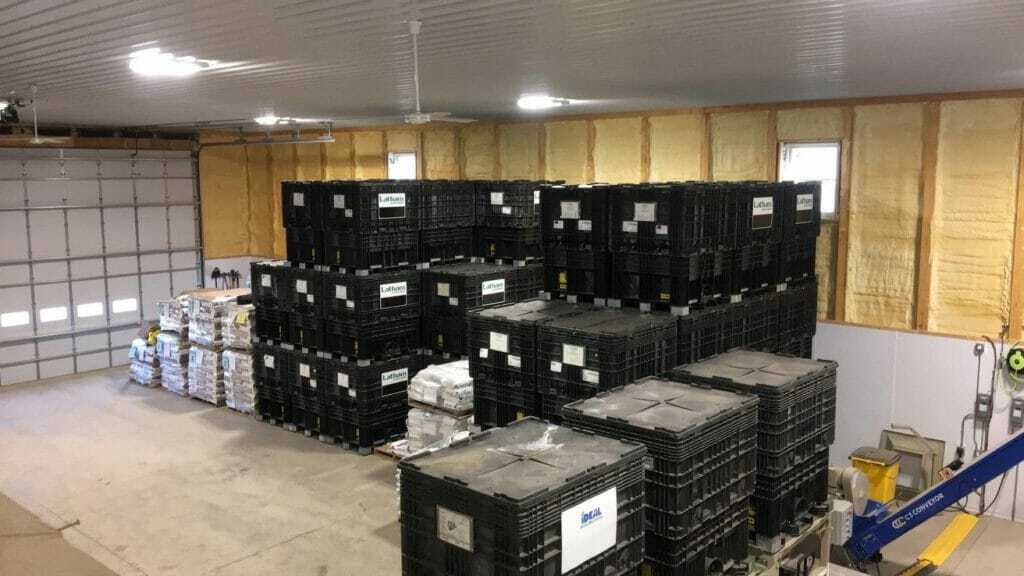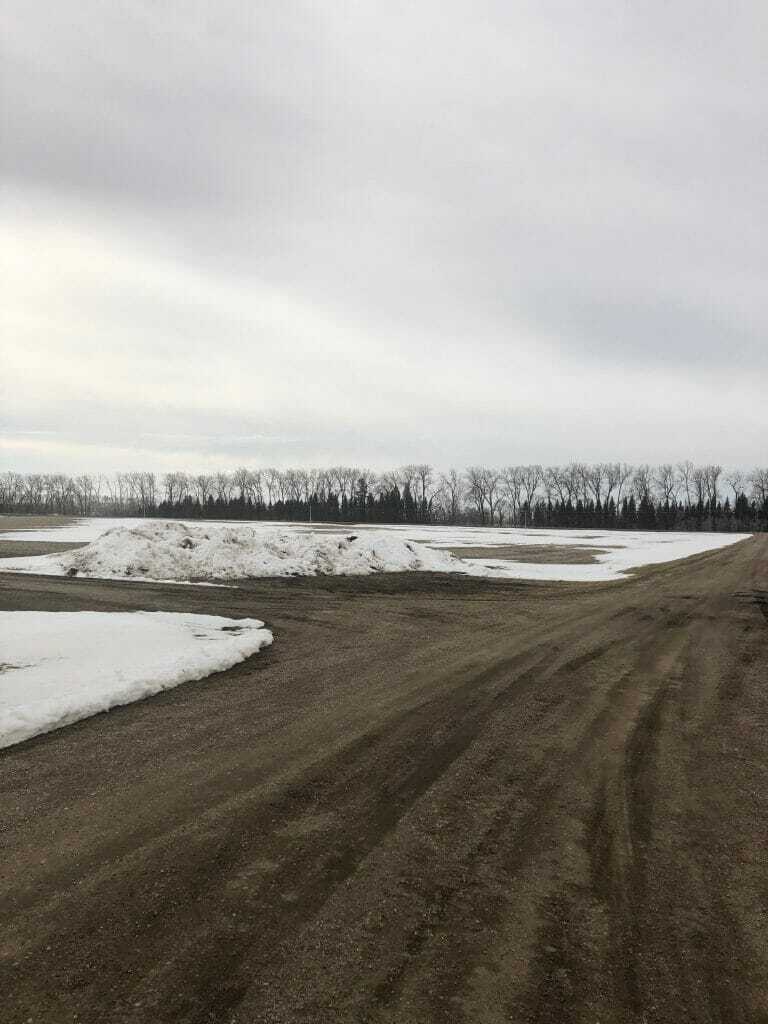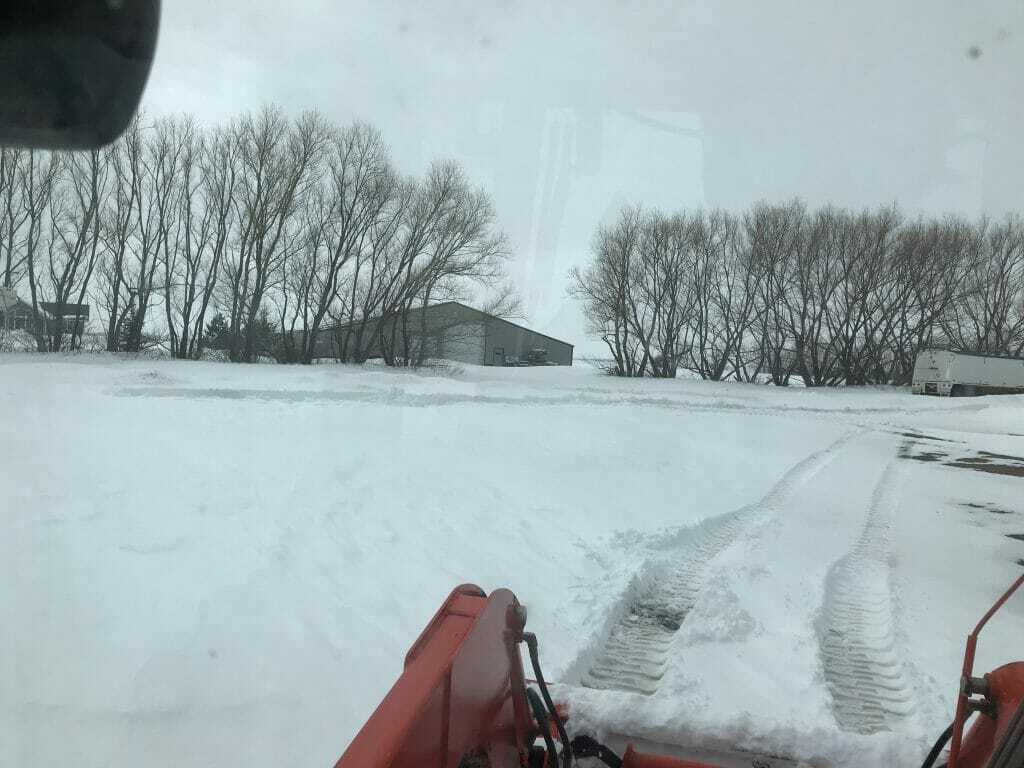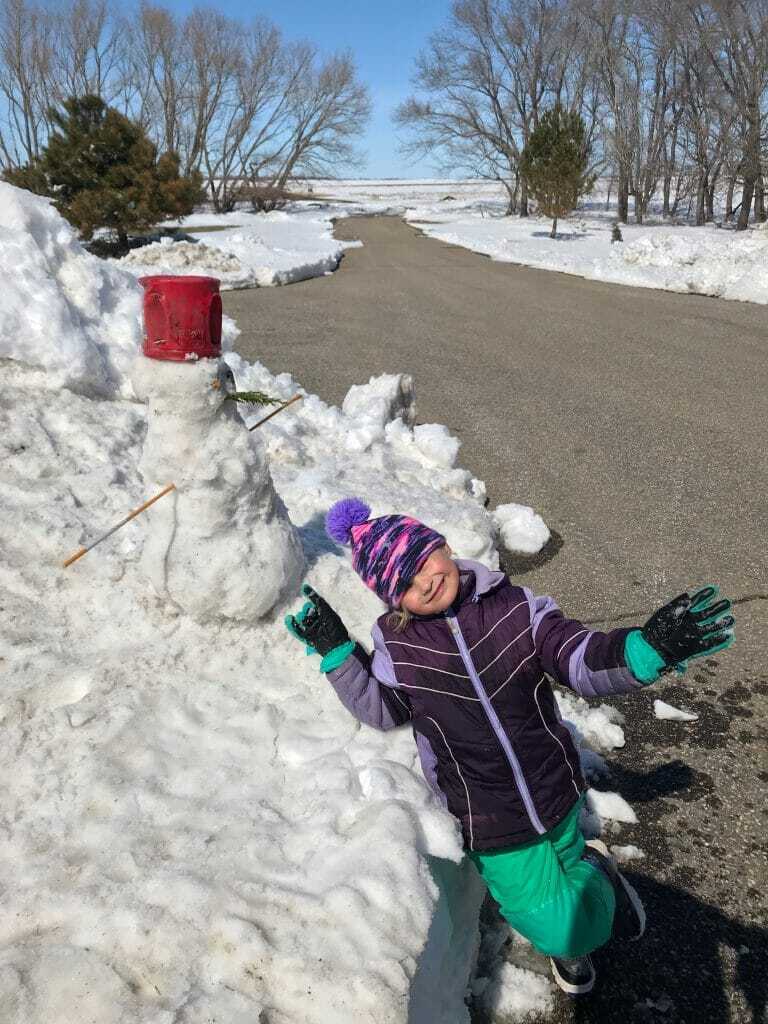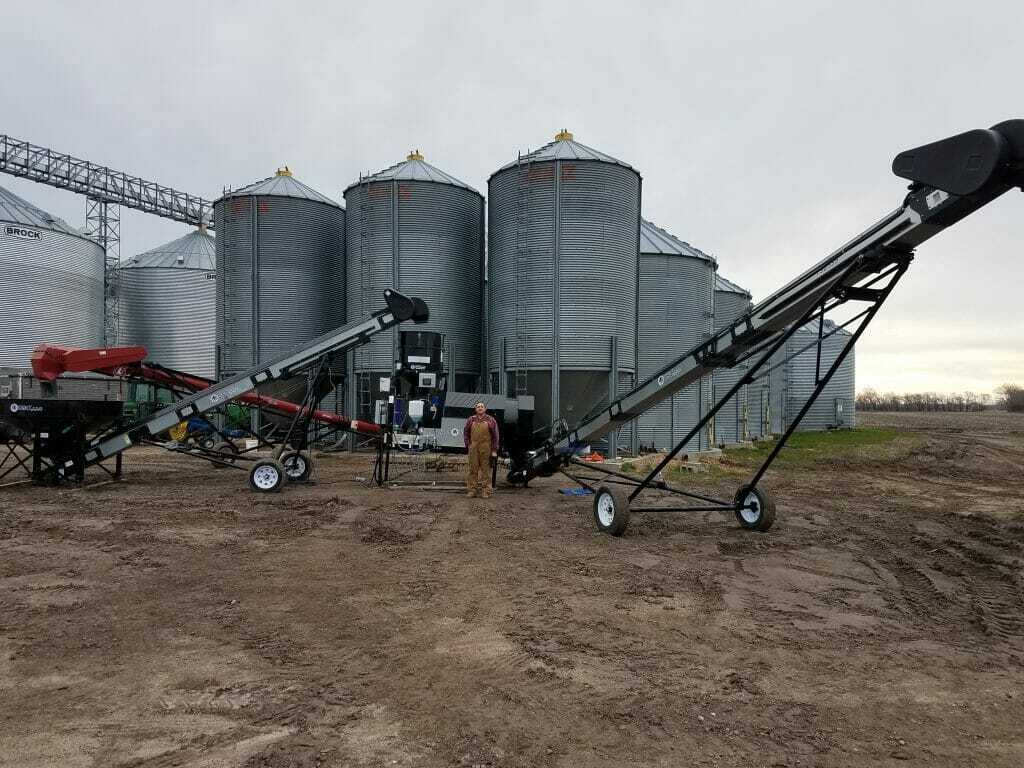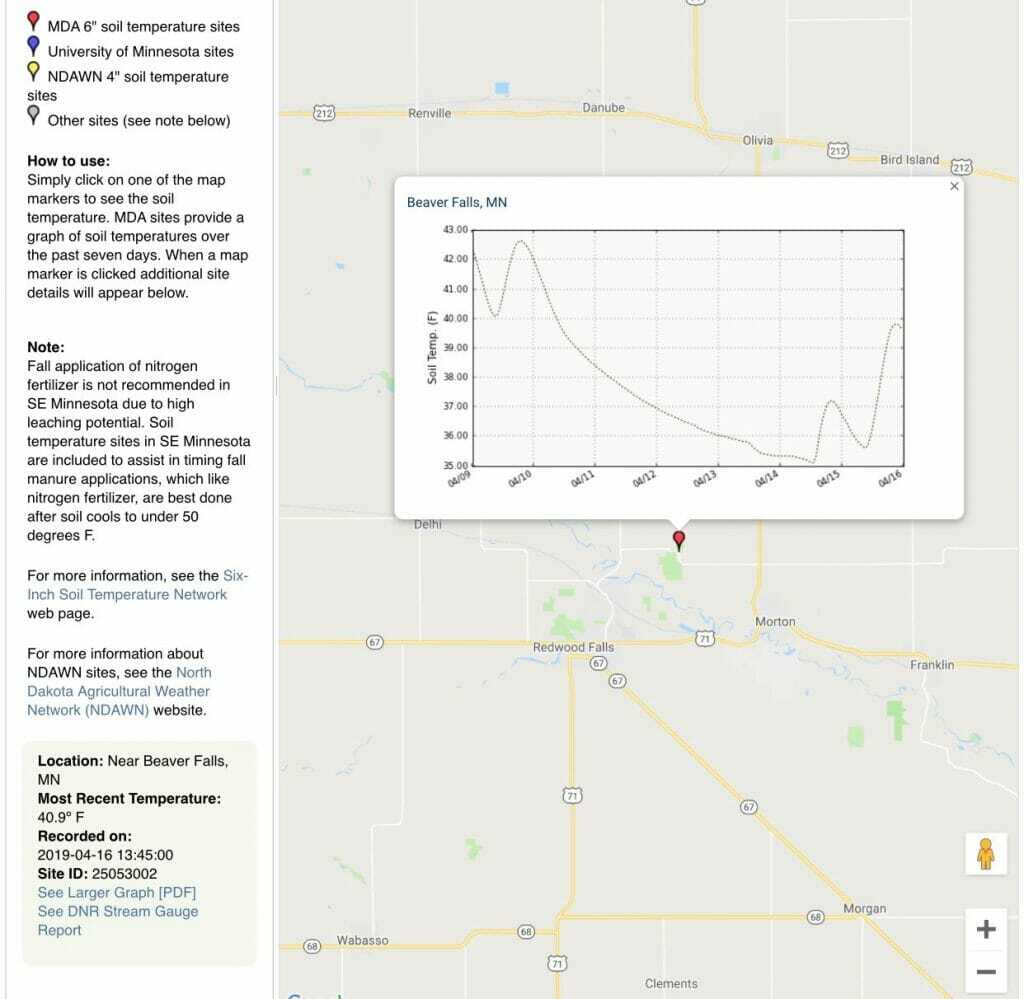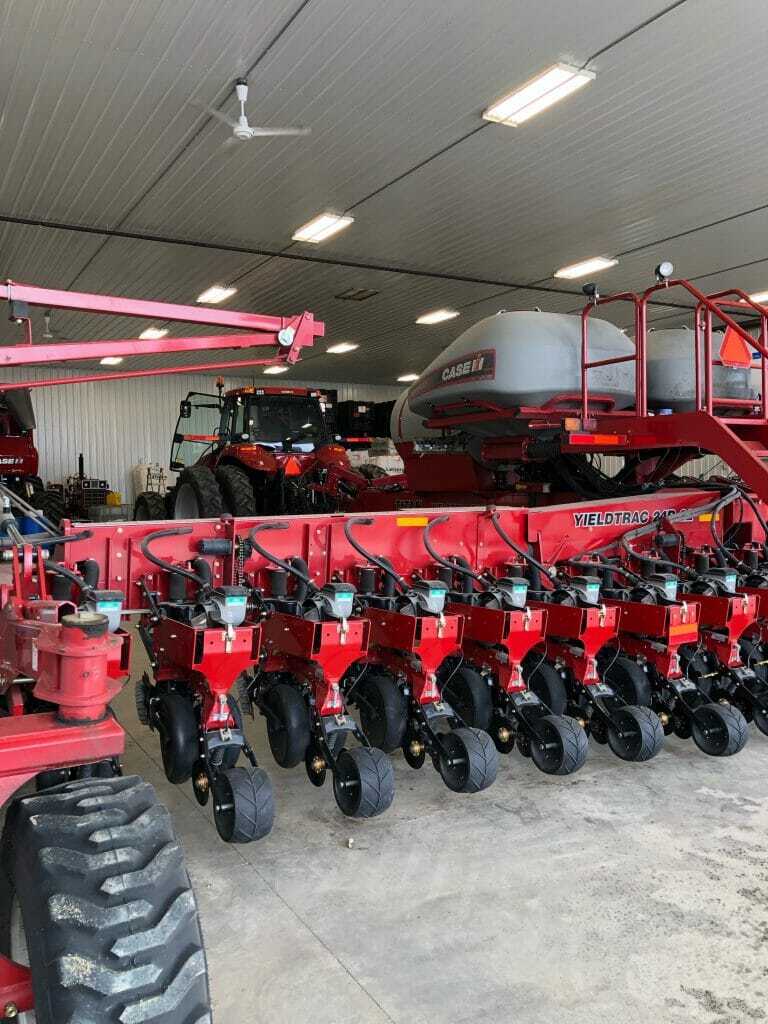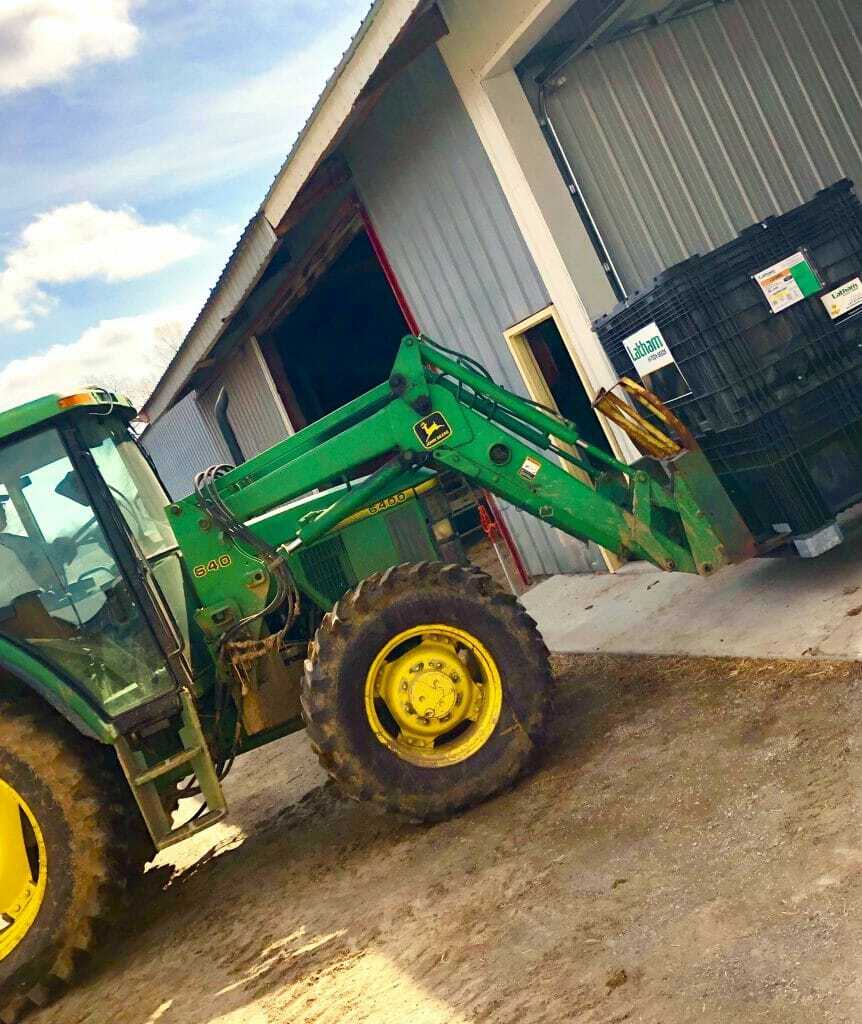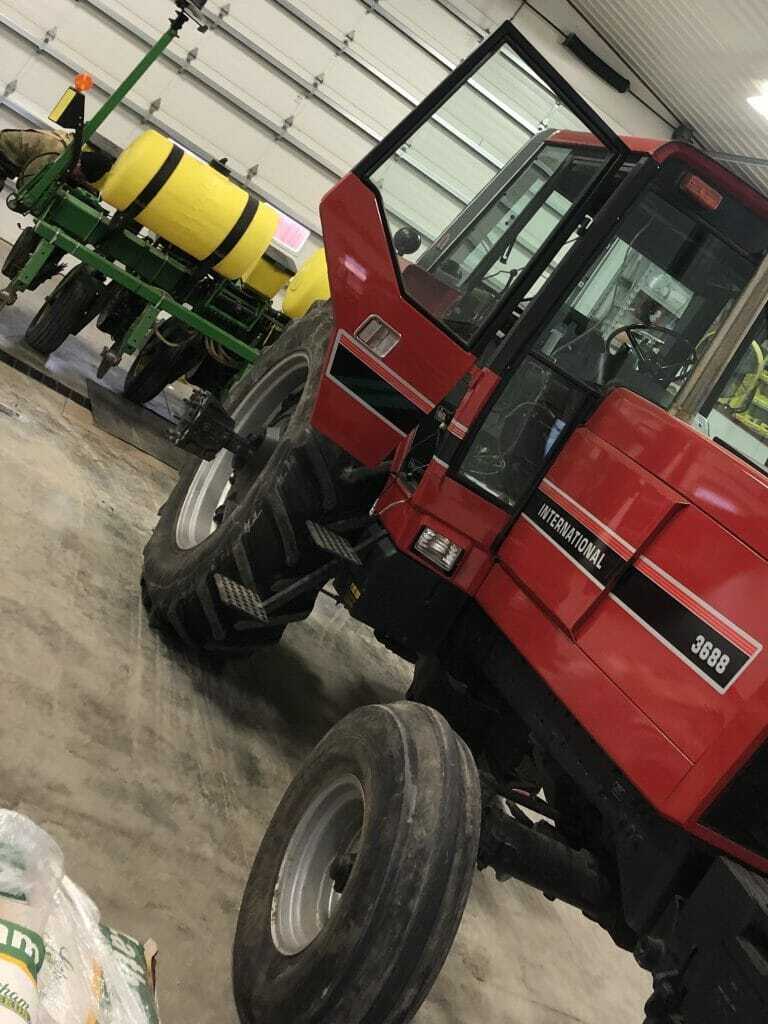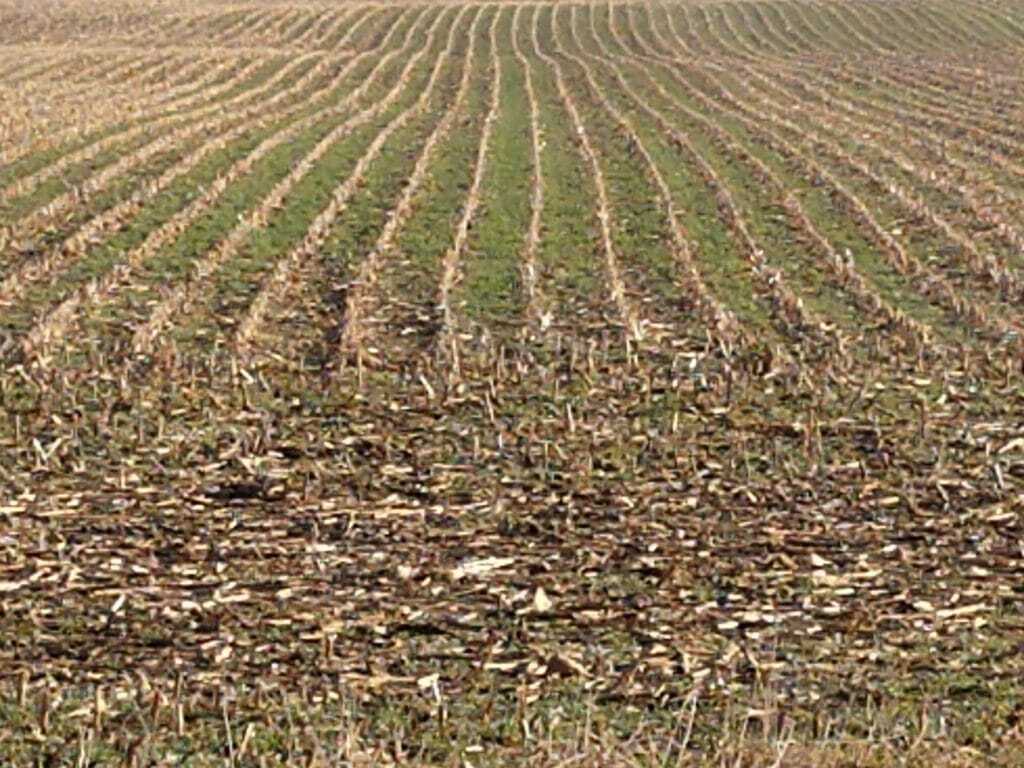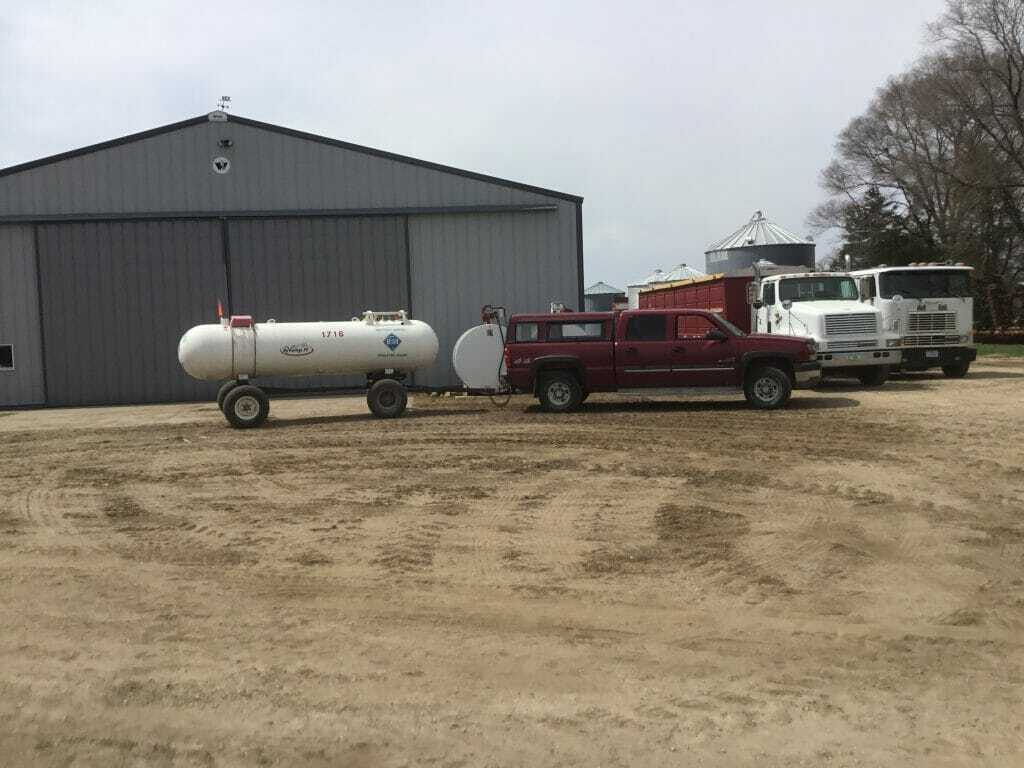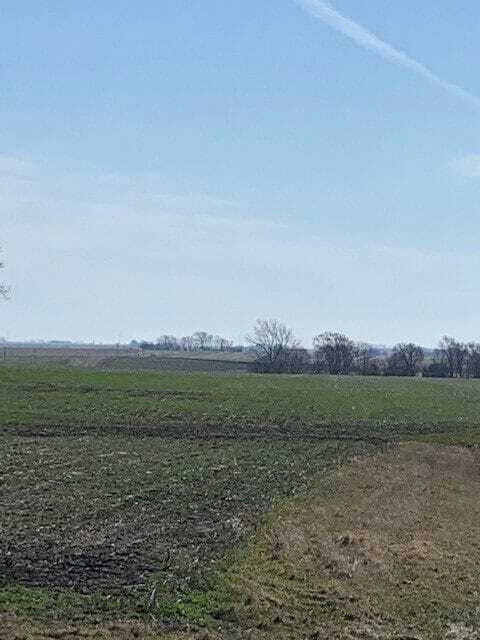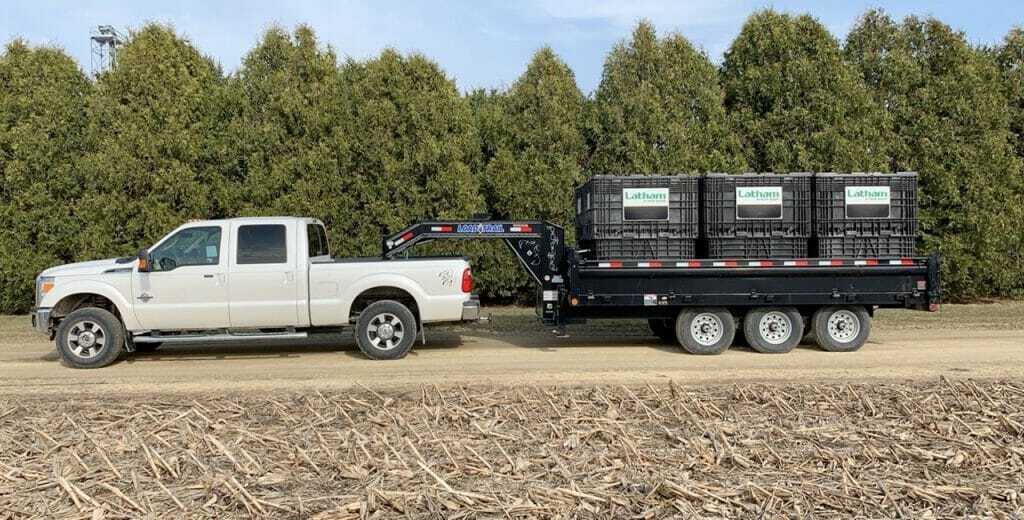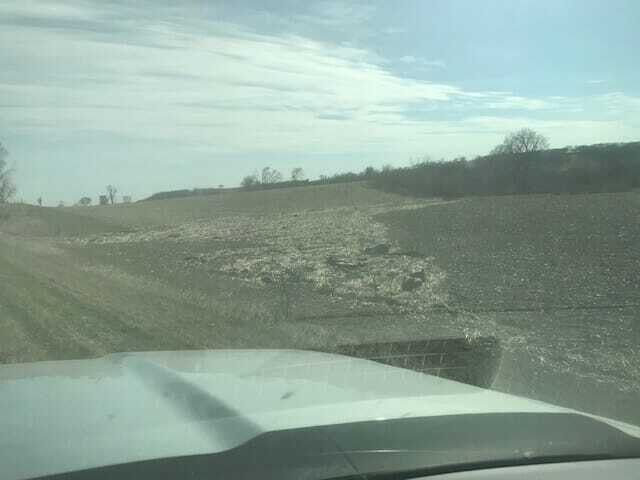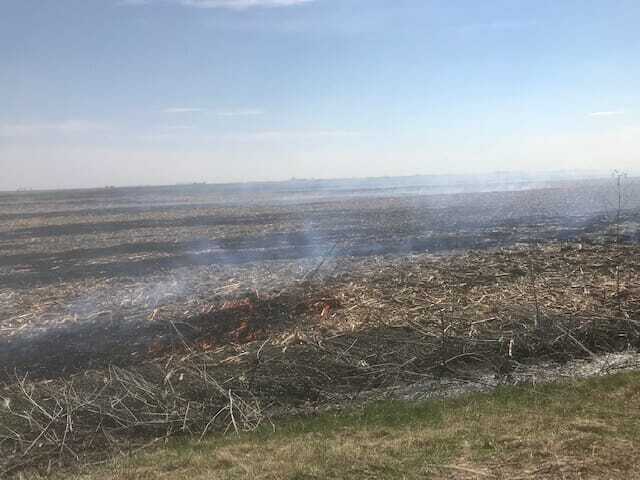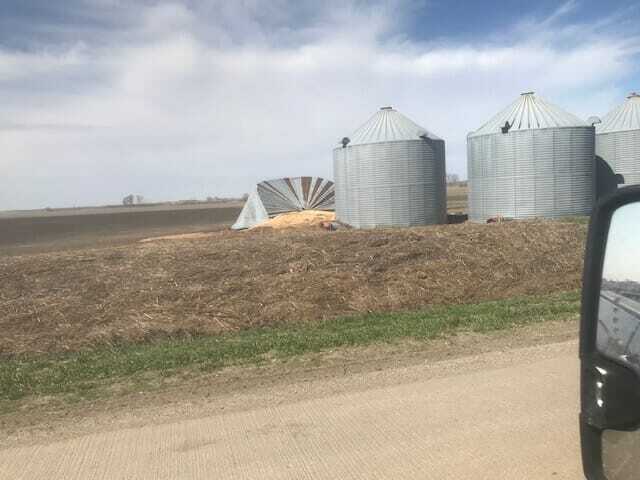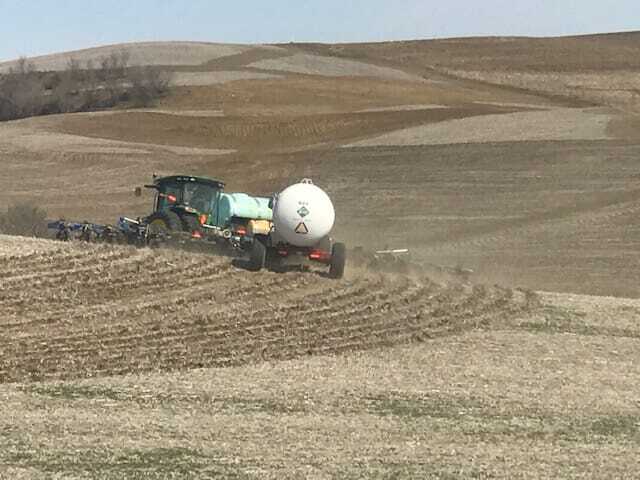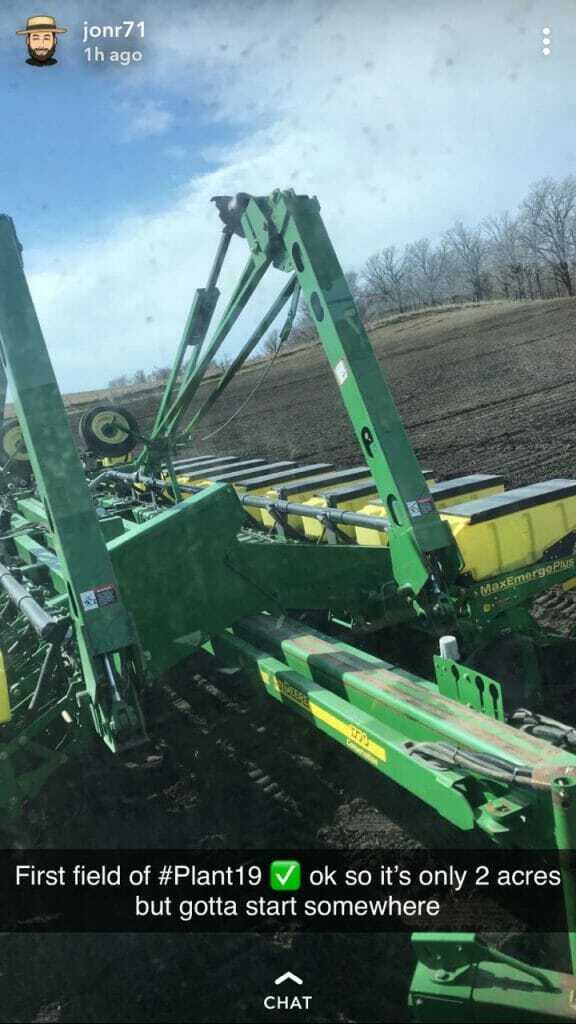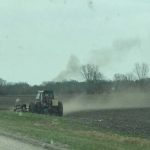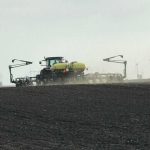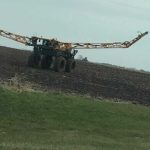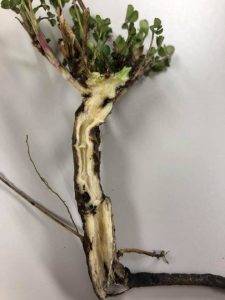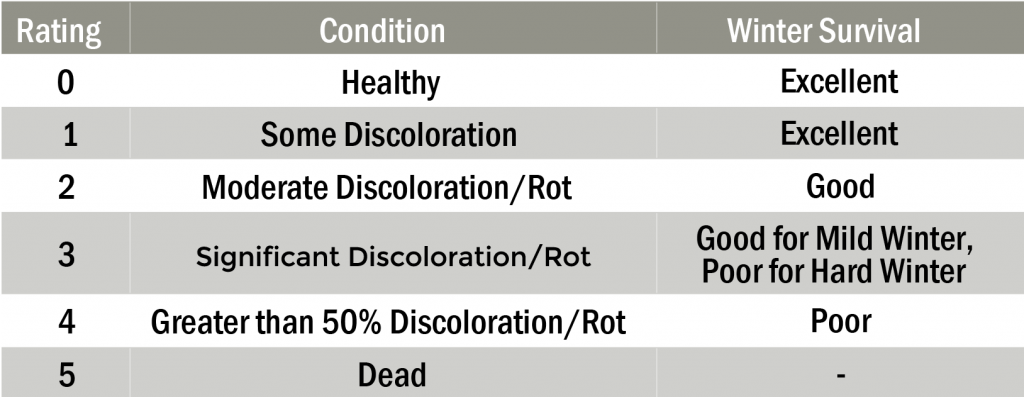Join us this morning on #AskTheAgronomist as we discuss pertinent planting tips with the recent addition of snow in the forecast. #LathamSeeds
-
Latham Hi‑Tech Seeds
April 24, 2019 Crop Reports

Eastern North Dakota
Brain McNamee
Planting conditions are very favorable, especially in the north and in the west. Even where it has been very wet this spring, tillage is underway. Farmers and those working in agribusiness are extremely busy. Lots of equipment is moving, so it’s imperative that we all stay aware and vigilant during these next few weeks. Let’s all have a wonderful, safe spring!
Southeast North Dakota
Gary Geske
Some areas are still too wet to get in the field, but a few planters are rolling. Soil conditions will remain colder than normal for sometime yet, so planting depth is critical for even emergence. Seed treatments, which protect seeds during germination and through their early growth stages, are even more important on years like this.
Southeast South Dakota
Ramie Coughlin
This past week the sun came out, temperatures rose, and the snow melted. All that good news means more flooded rivers. Pictured here is the James River near Huron, South Dakota. You can see this river is flowing outside its banks and into a field of corn stalks. Fortunately, the forecast calls for sun and wind with a few slight chances of rain. We’re hopeful fields will begin to dry out, so machines can start moving.
Northern Minnesota
Ken Highness
The picture was taken Monday near Appleton, Minnesota, which is about 150 miles south of Fargo, North Dakota. This is very typical site on farms throughout my region. We’re eagerly waiting for the snow to disappear from the tree claims, rivers to recede, and soils to dry, so planting may begin.
Southern Minnesota
Justin Prokosch
More than an inch of rain fell the past week in many parts of southern Minnesota, so field work is still at a standstill. Also during the past week, soil temps have gradually increased University of Research station in Lamberton. Depending whether we receive the precipitation that’s in this weekend’s forecast, we may see some activity in fields early next week.
Northern Wisconsin
Joe Salter
The past few weeks have been interesting in Northern Wisconsin from blowing and drifting snow to flash flood warnings followed by more rain and more flash flooding. Last week we finally caught a break in the weather with sunshine and temps in the 60s. Although we are not planting yet, we are moving in the right direction.
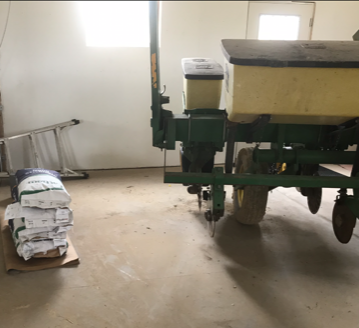
This has been a very exciting week as we approach the start of planting season! I delivered my first bags of Latham® corn seed as an RSM last Friday. Southern Wisconsin
Greg Mair
Planters started rolling last weekend in Southern Wisconsin. While the soil temps are still below where we would like to see them, it is getting warmer by the day. The soil worked up nicely and is creating a nice seed bed for the corn that’s going in the ground. With this nice weather we’re experiencing, farmers are running and gunning. Remember to take time to check planted spacing and depth, especially when switching fields. We want that corn seed 2” in the ground for adequate moisture and plant health.
North Central Iowa
Cory Greiman
Ground temperature at the 4-inch level at 7:00 am on April 23 was 43° F. To increase your chances for even emergence, wait to plant until the soil temperature is 50. Also delay tilling and planting until the soil is dry to minimize compaction.
Northeast Iowa
Craig Haaland
Anhydrous was applied over the weekend to this customer’s field in Mitchell County (Iowa). Quite a few fields got worked before the rain came on Monday. Soil temps in Northern Iowa yesterday were 50 degrees at 5 inches deep, but soils are still a little mucky to be planting. We could see planters rolling later in this week. It pays to have patience. Set up your crop to reach its full potential by waiting for soils to dry.
Northwest Iowa
Darin Chapman
Seed is going out the door in Northwest Iowa! We’re hoping to miss some rain, so we can plant.
Lots of fertilizer is being applied this spring due since wet fall weather prohibited much fertilizer from getting spread. While we wait for this to get done now, it gives us time to focus on getting the planter field-ready. The planter pass is where it all begins. If we don’t get it right at the planter, the rest of the things we do throughout the growing season won’t be as effective.
Eastern Iowa
Jerry Broders
Rain in the north slowed down field work and planting. Customers south of interstate are planting full speed ahead.
Western Iowa
Larry Krapfl
Planting is in full swing near Emerson, Nebraska, where this field is being planted to LH 6285 VT2 PRO RIB. Corn planting is about 25% done; and soybean planting also is underway.
West North Central Iowa
Bart Peterson
This warehouse in Goldfield, Iowa, is fully stocked with Latham® soybeans that will soon be planted.
-
Latham Hi‑Tech Seeds
Cutting Costs in Production

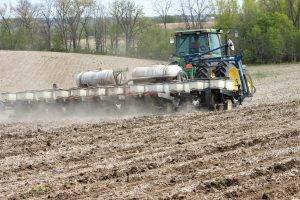 As prices have dropped over the last two months, farmers are second guessing planting intentions. They are looking to cut costs, and often times cost cutting starts at cutting seed costs. Keeping the hybrids with top yield and proven performance versus picking up a cheaper option is key to end-of-year profit. Cheap seed options can be older genetics, poor performing genetics or even discontinued genetics reaching the end of their life and viability.
As prices have dropped over the last two months, farmers are second guessing planting intentions. They are looking to cut costs, and often times cost cutting starts at cutting seed costs. Keeping the hybrids with top yield and proven performance versus picking up a cheaper option is key to end-of-year profit. Cheap seed options can be older genetics, poor performing genetics or even discontinued genetics reaching the end of their life and viability.It doesn’t take much to make up for inferior genetics as in perceived seed savings. Cutting $50 a bag is only saving $20 an acre, or roughly seven bushels. One cost savings that may be applicable to North Dakota farmers would be changing from a VT2 PRO to a Roundup Ready 2 trait. Keep the genetic that performs on that particular field and save the difference in trait costs. However, It may require more attention to pests throughout the growing season and an additional cost of an aerial application with insecticide. Check with your Latham® dealer on availability and your agronomist about the rising potential for future pest issues in your area.
Farmers can add fertility after the crop is established. They can also add weed control after the crop. However, there’s only once chance to place the right seed on the right acre. Seed is truly the foundation for every successful crop. Why limit net farm profitability from the onset?
-
Latham Hi‑Tech Seeds
April 17, 2019 Crop Reports

Eastern North Dakota
Brain McNamee
Seed is packaged and prepped for delivery. No year is truly the same in this business, but I can honestly say that 2019 has been the most uncertain. I still cannot believe the amount of acres across this region that still are in flux.
It looks like it will be one of those oddball years when the northern zone goes to the field weeks before the south. The hardcore no-till farmers in the western part of the state are rolling on peas and small grains. Rain in the short-term forecast will mellow everything and should make ideal planting conditions.
Southeast North Dakota
Gary Geske
While the calendar wants us to plant, Mother Nature is asking us to be patient. Use this time to ensure all equipment is ready. Make a plan, so you can be as efficient as possible when the soil conditions are fit for us to get into the field. Everyone will be busy, but safety should come first.
Northeast South Dakota
James Keltgen
The start of a new crop year has not yet brought us spring weather! Many areas in Northeast South Dakota (NESD) received two feet of snow during the past week; Wallace, SD received 30 inches. Snowfall totals this year reached over 80 inches, which is prolonging planting. There’s no need to rush to earlier maturities as there is still plenty of time to plant your full maturities. The weather pattern looks to be drier and warmer, so get those planters ready to go!
Southeast South Dakota
Ramie Coughlin
This photo was taken April 11 in Carthage, SD.
The calendar says it’s spring, but Mother Nature reminded us who’s running the show. Last week much of South Dakota was blanketed by snow, ice, and rain. Some areas received as much as 24 inches of snow while others dealt with ice and strong winds that knocked out power for days. With warmer temps and rain forecast for this week, hopefully much of the snow will melt by Monday. Unfortunately, that means there will be flood waters. Many areas were flooded before the storm, so people there will continue to deal with more water as the snow melt flows south. However, 50-degree temps have planters pulled up to shops and getting serviced. We will be ready when the time comes!
Northern Minnesota
Ken Highness
This picture was taken at Riverton Seed near Glyndon, Minnesota, where the Johnsons are busy moving and calibrating their seed treatment equipment. Cool, wet soil conditions at planting time increase the likelihood of seedling diseases. When seed lies in these soils for longer periods of time, there’s more time for the pathogens to attack the plant. Growers should consider starting with a solid seed treatment to help seedlings emerge as quickly as possible.
Southern Minnesota
Justin Prokosch
Soil temps are hanging around that 40-degree mark after 8 to 10 inches of snow fell five days ago in Redwood and Renville Counties. Planters remain in the shed, waiting for fit conditions to plant Latham® seed.
Northern Wisconsin
Joe Salter
It could be a few weeks before planters roll as Northern Wisconsin is still blanketed with snow. Last week we received more than one foot of snow. With that snow storm, we set a new snow total record of 98.9 inches. I was hoping for another inch and half to break the 100″ mark!
These photos give you an idea of the challenges we faced cleaning up from last week’s storm. Drifts were as high as 7 feet. The first picture is my driveway; look closely and you’ll see a plow truck about half way up the lane. The second photo is what’s left of a machine shed after the roof caved. Several hundred farmers in this area experienced the loss of a shed, machine shop or barn.
Southern Wisconsin
Greg Mair
Depending on what Wednesday’s forecast brings, we might be able to turn planters loose on Monday in southern Wisconsin. As the weather turns for the better, Latham® dealers are busy getting seed delivered and doing their final planter inspections before they hit the fields. This John Deere 1750 planter is in the shop, getting upgraded to a Precision SeedSense 20/20 monitor and Climate Fieldview.
North Central Iowa
Cory Greiman
Cover crops are starting to grow now that we’ve experienced some warmer temps in North Central Iowa.
Northeast Iowa
Craig Haaland
This farmer in Black Hawk County applied anhydrous this week. The soil temp is around 45 degrees in Black Hawk and surrounding counties, but soil temperatures aren’t that warm yet in northern Iowa and southern Minnesota. With rain in the forecast this week, it should get the rest of the frost out of the ground. I expect to see tillage underway and anhydrous going on next week in the more northern part of my territory.
Northwest Iowa
Darin Chapman
With plenty of moisture and a few days of sunshine, this field of Latham® cereal rye and Daikon Radish is coming along nicely. This grower has been using a cover crop program for six years credits this practice for his increasing soybean yields.
Eastern Iowa
Jerry Broders
Field work is underway in Eastern Iowa. Anhydrous is being applied, and Latham® seed is being delivered.
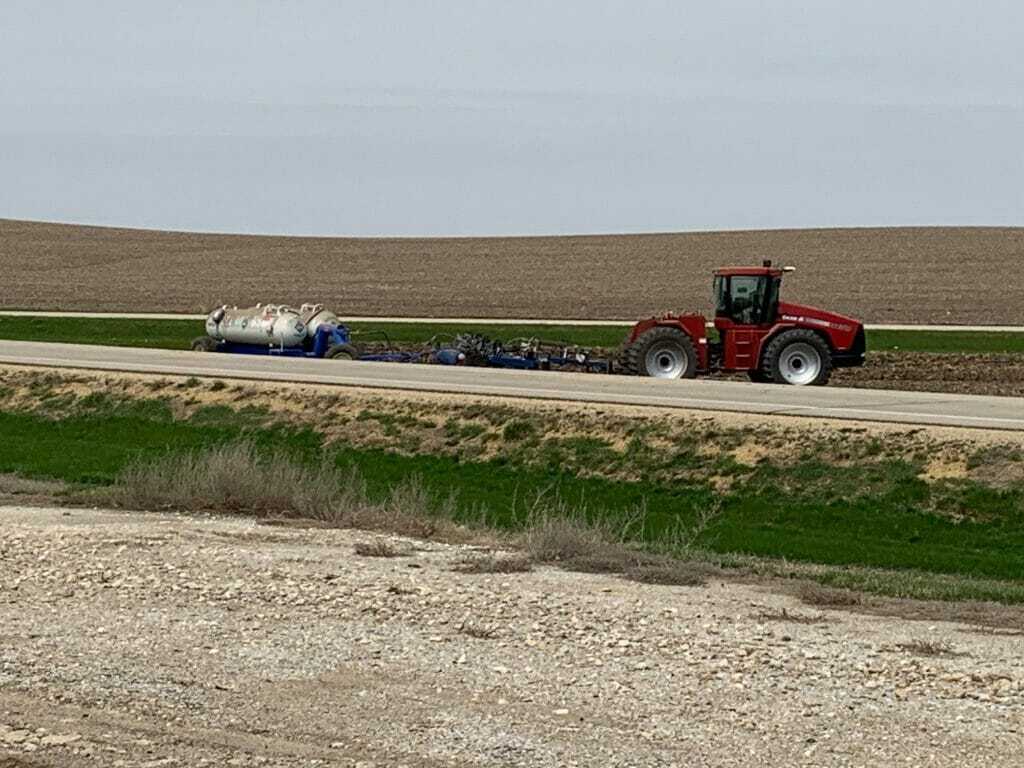
Western Iowa
Larry Krapfl
These photos help show why Iowa Gov. Kim Reynolds issued a disaster proclamation for 21 counties in response to flooding and severe weather that began March 13 and continues. Here you can see some of the residue left in the fields after flood waters receded.
It’s common to see roads closed after flood waters wreaked havoc in western Iowa and eastern Nebraska.
Controlled burns were used to remove corn stalks and soybean after the flood waters receded. These photos show corn stalks and soybean stubble burning.
Grain bins collapsed when grain swelled during the flood.
Now that cleanup is done, field work has begun! We’re grateful for sunshine and warm temperatures.
West North Central Iowa
Bart Peterson
Latham Dealer Jenna Ricklefs and her husband, Jon, on April 16 started planting corn north of Rolfe in West Central Iowa. The first number that went in the ground was Latham’s LH 6175 VT2 PRO.
Central Iowa
Bryan Rohe
Temperatures have been in the high 60s and low 70s across Central Iowa, so farmers have been busy. This week they have put on anhydrous, done some tillage and a little spraying. Planting even got underway, although it may come to a halt soon as rain is in the forecast for the rest of this week.
-
Latham Hi‑Tech Seeds
Select Plant Genetics to Help You Manage Risks

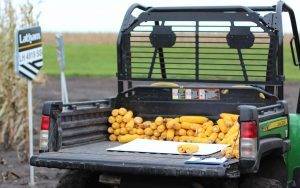 Webster’s Dictionary defines “risk” in many ways, including a chance that an investment will lose value or something that creates a hazard.
Webster’s Dictionary defines “risk” in many ways, including a chance that an investment will lose value or something that creates a hazard.No matter how one defines risk, it’s a reality of production agriculture. Each decision farmers make comes with varying degrees of risk. That’s why it’s helpful to take an annual inventory of details in your own crop production. Bottom line: Check your production-limiting factors to set yourself up for success.
“Trust but verify,” is a famous quote by President Ronald Regan that appeals to my data-driven personality. This quote applies to crop production because now is a good time to verify that the seed corn you ordered early is the right hybrid for the majority soil type on the field in which you will plant it. Now is also a good time to ensure you have enough genetic diversity in your crop plan. On page 12 of Latham Seeds 2019 Product Guide, there is a corn placement chart to help you verify that the genetics you have selected for that soil type is the best fit.
Margins are super tight, and we’re looking for ways to cut costs. If we cut fertility, we risk losing potential yield. Many researchers suggest that up to 60% of yield is dependent upon fertility. If we plant inferior genetics, or place the genetics on the wrong soil type, we run the risk of yield reduction. While this is a review for most, my point is that plant genetics are critical to managing risk.
Understanding – and acknowledging – the depth of the genetics will pay dividends. I’m a very big believer in planting agronomically-stable products on a percentage of your acres. As margins thin, I look for hybrids with proven stability. I know each farmer has his or her own beliefs, but one thing we have in common is that we’re all trying to manage risk.
Some risks are outside our control, but we can reduce risk with our input choices.
- Disease– Select hybrids with superior disease resistance, especially to foliar leaf diseases, if you aren’t planning on investing in a foliar fungicide.
- Drought– Plant a portfolio of seed products, including planting a percentage of your total acres to a hybrid with unapparelled drought tolerance. It’s about building a system of risk management and finding that delicate balance of hybrids to give you the best “team” possible.
- Fertility– Some hybrids use nutrients more efficiently than others. Suggestions are shown in the Latham® product guide, and you can talk with your Regional Sales Manager (RSM).
My hope is that you go into the spring planting season with a sense of confidence, knowing you have done the best job you could with product selection, product placement, fertility and planting conditions. Have a little fun this season and remember to take care of yourself, too!
-
Latham Hi‑Tech Seeds
Alfalfa Winter Survival

Click below to hear Phil Long address winter survival in alfalfa! #AskTheAgronomist
-
Latham Hi‑Tech Seeds
Evaluating Winter Kill

Evaluating alfalfa stands is a spring-time ritual for every alfalfa grower. This winter presented several challenges to strong, hardy alfalfa varieties. This includes above average soil moisture going into winter, soil temps that dipped below 15 degrees Fahrenheit in areas without snow cover and below average snowfall followed by above average snowfall in February.
Remember, patience is a virtue. Winter-injured plants are often slow to recover in the spring, so avoid making a quick decision to destroy a winter-injured stand. Allow the alfalfa to green up.
Tips for evaluating alfalfa stands:
- Select at least four areas of the field and count stems. Wisconsin research has shown that counting stems provides a more accurate yield estimate.
- Dig plants from four locations of the field, including top 6 inches of the root. Examine the crown for size, symmetry, and number of shoots present.
- Cut the root of these plants lengthwise. Check for rot or discoloration of the crown and root. Healthy stands have fewer than 30% of the plants in categories 3 and 4. (Seed tables.)
Additional considerations when deciding whether to tear out existing alfalfa stands:
- You have heavy weed pressure but a light alfalfa stand.
- You have adequate alfalfa or hay inventory, so you can use the nitrogen credits and rotate that field into another crop.
- If the alfalfa stand is more than a year old, you may have high concentrations of the autotoxicity compound present. That will reduce the effectiveness of interseeding alfalfa, so producers can interseed Italian ryegrass, clover, or oats as a temporary solution to thicken the stand.
For additional information, feel free to contact me or your Latham regional manager. We’d also love an opportunity to talk with you about the placement for Latham Seeds’ outstanding lineup of high-quality forage products.
While we obviously can’t control the weather, there are other factors we can manage to help reduce the risk of winter kill in the future.
- Stand Age – Older stands are more likely to winterkill.
- Soil Fertility – Stands with high fertility, particularly potassium, are less likely to experience winter injury.
- Cutting Management – Both harvest frequency and timing of fall cutting affect winter hardiness. The shorter the interval between cuttings, the greater the risk of winter injury.
- Variety – Varieties with superior winter-hardiness ratings and a high disease resistance index are less likely to experience winter injury.
- Soil pH – Stands growing on soils with a pH above 6.6 are less likely to experience winter injury.
-
Latham Hi‑Tech Seeds
#AskTheAgronomist: What’s the Right Nitrogen Application Rate?

Join us this morning as we discuss the final “R” in our nitrogen application series! #AskTheAgronomist
https://www.facebook.com/LathamSeeds/videos/320955165207264?sfns=mo
-
Latham Hi‑Tech Seeds
Stalk Lodging
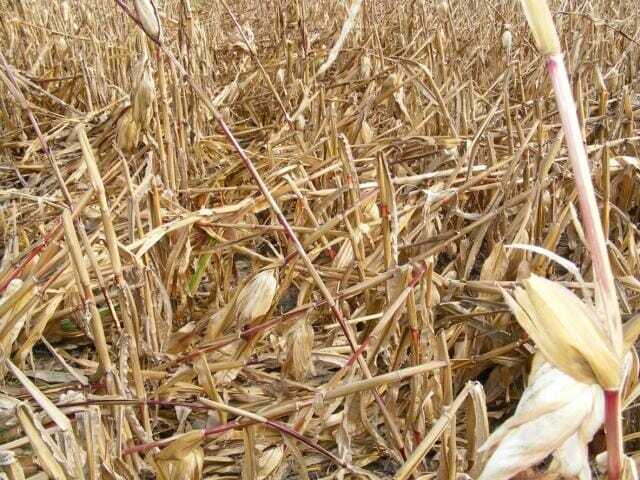
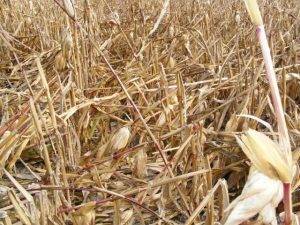
Credit: The Ohio State University Stalk lodging can lead to reduced yield and grain quality. Lodging refers to the breakage of the stalk below the ear and is often connected with stalk rots, soil-borne pathogens and other environmental stressors that occur after pollination.
Causes of Stalk Lodging
Carbohydrate demand during grain fill is the primary driver of stalk lodging. When carbohydrate reserves in corn leaves are depleted during ear development, the plant will begin sourcing the macronutrient from stalks and roots. Environmental stresses can feed into this cycle. For example, warm weather and high temperatures increase plant growth which can lead to high demand for carbohydrates.
While energy demand during grain fill is the primary cause of lodging, fungal pathogens can reduce stalk vigor. Stalk rot pathogens can also weaken stalks and are another major cause of lodging. Generally, if more than 10 to 15% of stalks exhibit rotting, stalk lodging is likely to be a significant problem.
As it relates to weather, high winds and heavy rainfall can also cause stalks to become physiologically weak and eventually lodge. Injuries from hail or frost damage, or insect feeding that creates lesions on leaves, can reduce the amount of energy created by plants. This leads to a higher use of stalk carbohydrate reserves.
Nutrient deficiencies are also a major cause of stalk lodging. Excess nitrogen and low levels of potassium have been associated with reduced stalk quality. Maintaining sufficient potassium levels in corn is especially important as it is the building block for leaf and stalk tissue.
Scouting and Treatment Options
When scouting for stalk lodging, choose ten consecutive plants across ten different areas of the field. Check for signs of lodging by pinching the stalk at the first or second internode above the ground, or by pushing the plant over 8 to 12 inches at ear level. If the plant fails to stay standing upon exerting force, it is considered lodged.
Adjust your harvest plan to harvest lodged corn first before lodging becomes more widespread. Selecting the right corn hybrid for your farm can mitigate issues with insect feeding that would otherwise reduce stalk quality. The level of resistance to stalk lodging among hybrids is highly variant and some have genetically stronger stalks than others. Be sure to consult with your local Latham representative to determine the best management strategy for stalk lodging.
-
Latham Hi‑Tech Seeds
Sclerotinia Stem Rot or “White Mold” in Soybeans
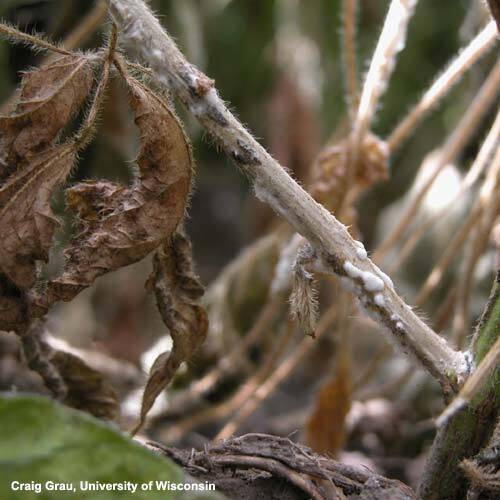
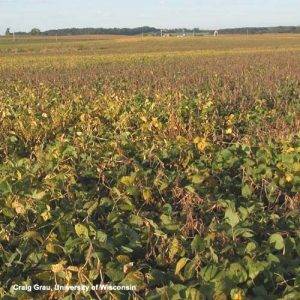
Credit: University of Wisconsin Sclerotinia stem rot – also known as White Mold –can lead to significant yield loss in soybeans. Yield loss from white mold is attributed to the damage it causes to leaves, pods and stems. Research from the University of Wisconsin estimates the disease has costed growers in the U.S. and Canada 101 million bushels of soybeans – equal to $1.2 billion.
White mold is caused by the fungus Sclerotinia sclerotiorum and overwinters in the soil for a number of years. After the fungus emerges from the soil, mushroom shaped structures known as apothecia will form on the soil surface. The apothecia, ranging between ¼ and ½ an inch wide, will first infect through soybean flowers before it reaches the stem.
While the fungus primarily spreads through the air via spores, moisture is required for infection to take place. As a result, cool and wet weather along with high humidity are the main causes of white mold.
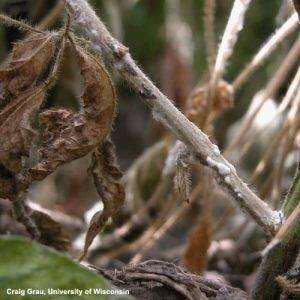
Credit: University of Wisconsin Scouting for White Mold
While Sclerotinia sclerotiorum is often confused with other fungal pathogens, the sclerotia distinguishes white mold from other look-alike diseases. Symptoms of white mold will be most prevalent between R3 and R6. Infected plants will exhibit white fuzzy growth on the lower stem.
Soybean blossoms are the first area of the plant to exhibit signs of infection and neighboring stems and pods may appear water-saturated. After infecting blossoms and pods, white mold may eventually spread through the entire stem causing it to turn tan or bleached of color. As the mold growth becomes thicker, black spots will begin to surface throughout the fuzzy white surface.
White mold also creates foliar symptoms, causing leaves to completely die while still attached to the stem. In infected soybeans, the tissue area between the leaf veins will turn gray and cause leaves to become wilted and curled.
Treatment Options
Due to the overwintering nature of the sclerotia, a two to three-year rotation away from soybeans is advised. When it comes to genetics, some soybean varieties are more resistant to white mold than others. Varieties with resistance to the fungus may recover better than others. It is also important to consider planting practices that cause white mold growth. Shade created from high plant density and growing canopies can lead to the fungal disease. Increasing row width and reducing planting populations are the best methods to improve airflow through the canopy and reduce infection from white mold.
In addition, broadleaf weeds are notorious for hosting white mold and herbicides should be used to control weeds. Fungicides are a viable method for treating white mold and can reduce the negative impacts incurred by soybeans. However, they are most effective when applied just before infection takes place. Be sure to consult with your local Latham representative to determine the best treatment plan for white mold.


